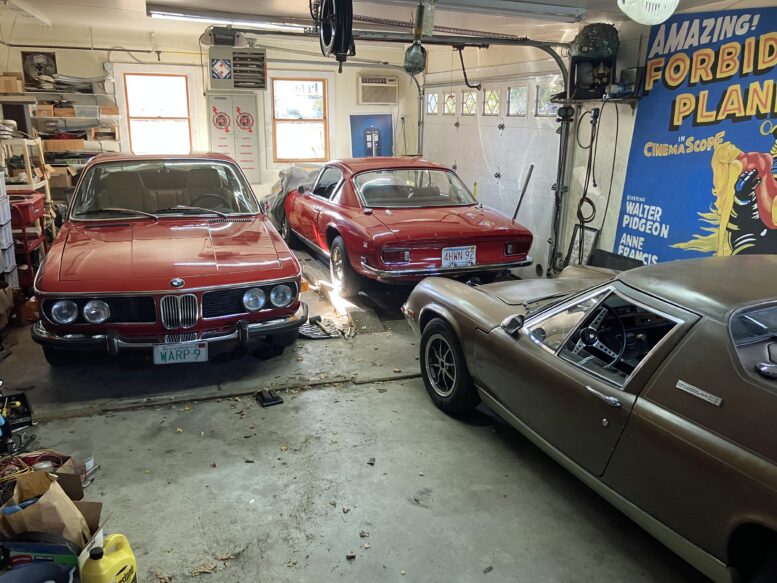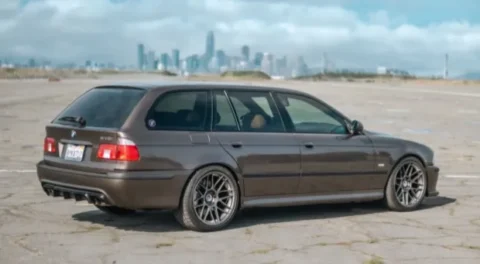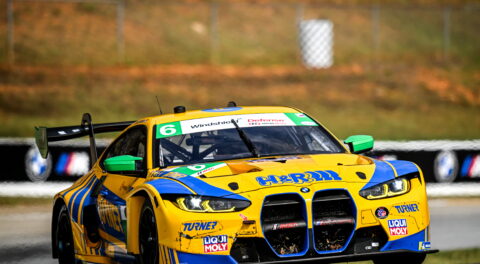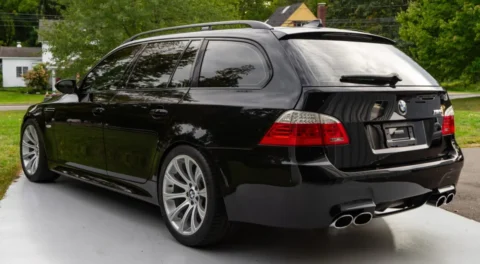Having owned over 70 BMWs and currently possessing nine, I don’t think I need to prove my blue-and-white cred to anyone. I’ve told and retold my origin story of a 2002-owning Hampshire College student who lived with us for a summer in Amherst when I was in junior high school and how he drove me around Amherst in the boxy little sports sedan, cornering on three wheels and causing me to imprint on the car and follow it around for the rest of my life.
However, before this fellow owned the 2002, he had a Jaguar E-Type. I rode in it just once. Even being in this car’s presence was a knee-weakening experience for 13-year-old me. I have no doubt that’s why, when I bought my first car in 1976, it wasn’t a beat-up 2002—it was a 1970 Triumph GT6+, which undeniably evokes a little E-Type.
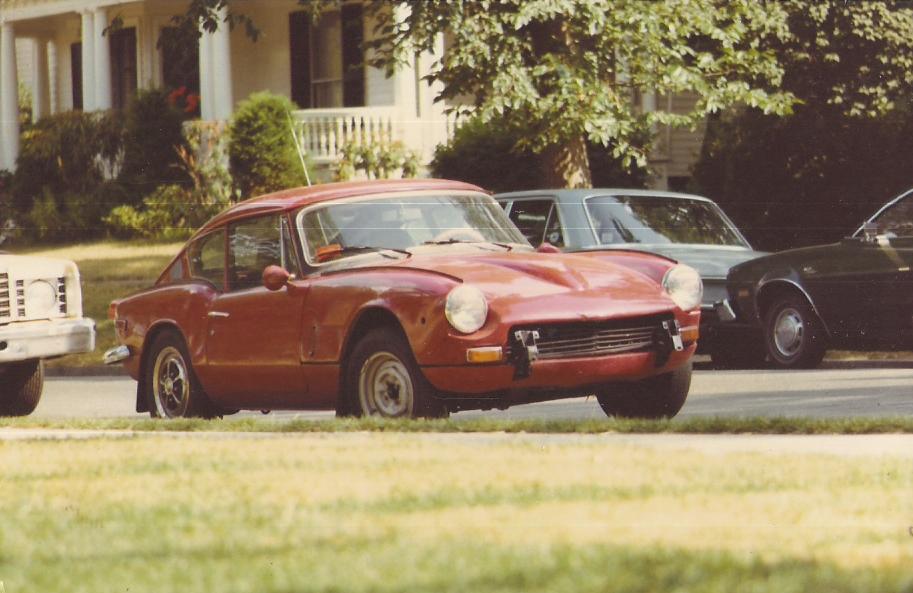
It was the best of cars, the worst of cars, no, it was just the worst of cars.
The GT6 was also, without question, the worst car I ever owned. The car taught me that everything bad I ever heard about British cars was true—the rust, the metal fatigue, the Lucas electrical system jokes, all of it. The car probably ran 40% of the 2 1/2 years I owned it. Granted, we didn’t live in this wonderful web-enabled click-and-buy era, so when it did things like breaking a rear axle or having its clutch fork turn to cornflakes, procuring parts was hardly a next-day-delivery thing. I bought my first 2002 in 1982 and never looked back.
Well, not never. The GT6 warned me of anything British for 38 years, but in 2013, when my first book was published, I celebrated by buying a 1974 Lotus Europa Twin Cam Special. As with 2002, I had an adolescent tie-in with the Europa, having worked for a guy who owned a stereo store and seemed to be on the sports car-of-the-month plan. I’ve told this story before: I was standing outside with another employee (I remember him as old; he was probably 40) when the owner drove up in this impossibly low angular Europa, and the both of us were staring. The other guy said, “A car like that, you can get sex out of.” Adolescent me thought he was talking about how easy it must be to attract women with a car that arresting. It wasn’t until decades later that I realized he was talking about the sensation of owning and driving such a cool car.
When I bought the Europa, I knew it hadn’t run in 40 years and had a seized engine, but I didn’t think that was a big deal. I’d revived many dead old BMWs. I was used to the 2002s when, if you needed an engine, you could decide what you wanted to spend. Have only $300? No problem. You can find engines that have been sitting for years but turn. More like $800 will find you one where the person who removed it has some memory of how it ran. Finding rebuilt engines in the low thousands of dollars usually isn’t difficult.
In contrast, I had no clue what an oddball the Lotus-Ford Twin-Cam engine is and how hen’s-teeth rarely used running ones are. That, combined with job loss and career change, made the rejuvenation project grind to a halt. It took me six years to get the Europa running.
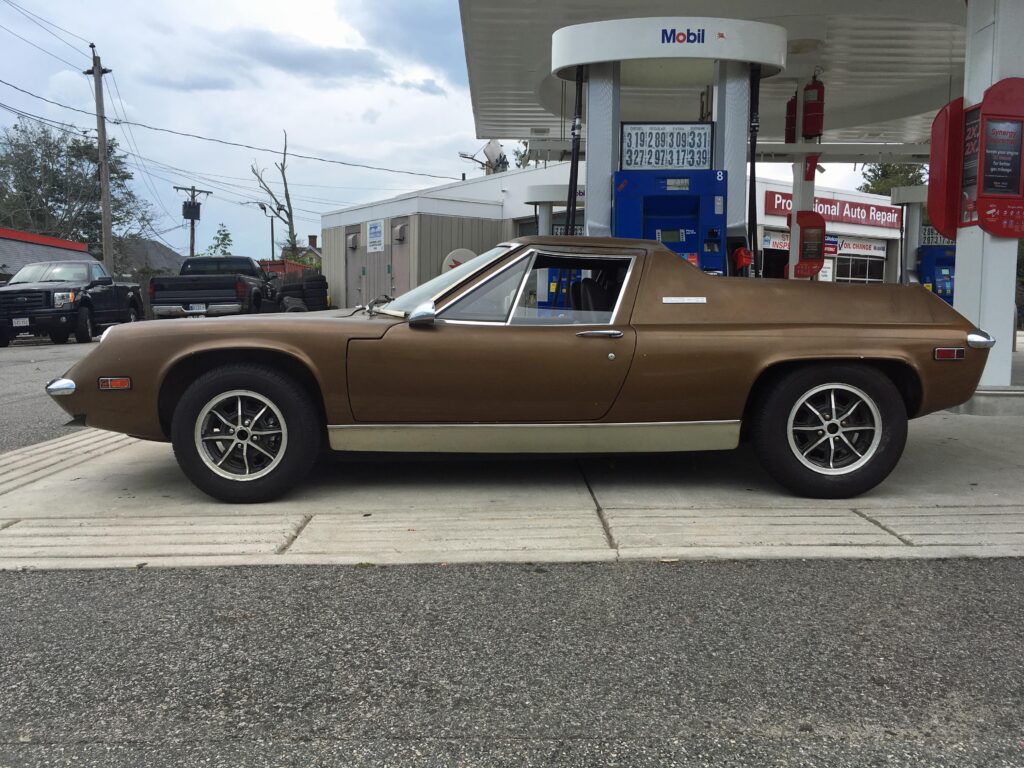
The barely-running Europa on its very first fuel run in 2019.
But once I did, I loved the car. I loved its rawness, lowness, weirdness, slot-car-like feel, and the fact that, 50 years after its debut, it was doing what it was designed to do, providing mid-engine Gran Prix-style sensations in an affordable package. After attending the Lotus Owner’s Gathering (LOG) in Sturbridge, MA, in 2019, I also found that I loved the vintage Lotus community, which is not unlike the vintage BMW community in its friendliness, scrappiness, and inventiveness.
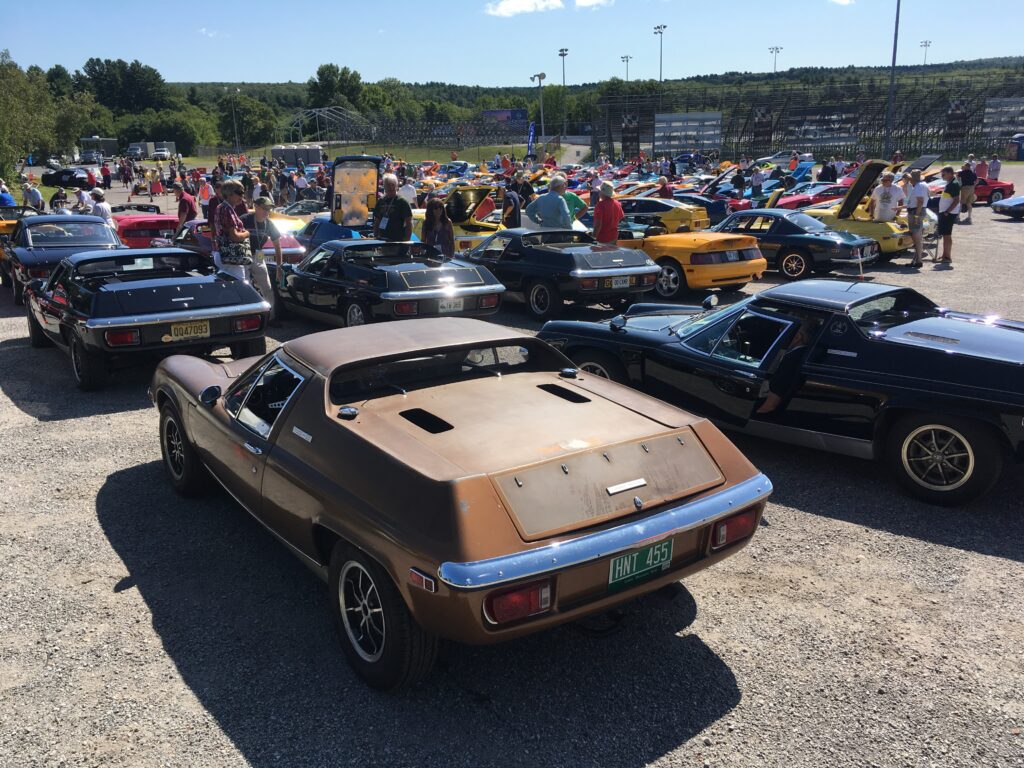
My ’74 Europa, easily the rattiest Lotus at LOG 2019, was welcomed with open arms.
But while I was at LOG, a funny thing happened. Just like how driving around Austin 43 years ago looking for dead 2002s in people’s driveways, I saw my first E9 3.0CS and thought, “screw 2002s, I want one of these,” I came face-to-face at LOG with a car I didn’t know existed—the Lotus Elan +2 (also written as “Plus 2”). The name implies that it is a stretched version of the Elan Roadster with a back seat. Still, while it shares the Elan’s front-engine fiberglass-body-on-steel-backbone configuration and was designed by Ron Hickman like the Elan, it’s an entirely different car. It’s a hardtop, about two feet longer and eight inches wider than an Elan. Still, in addition to that, there’s something almost Italian about the flat hood combined with the sensual curve of where the body meets the roof line, particularly on cars painted in the factory’s two-tone scheme.
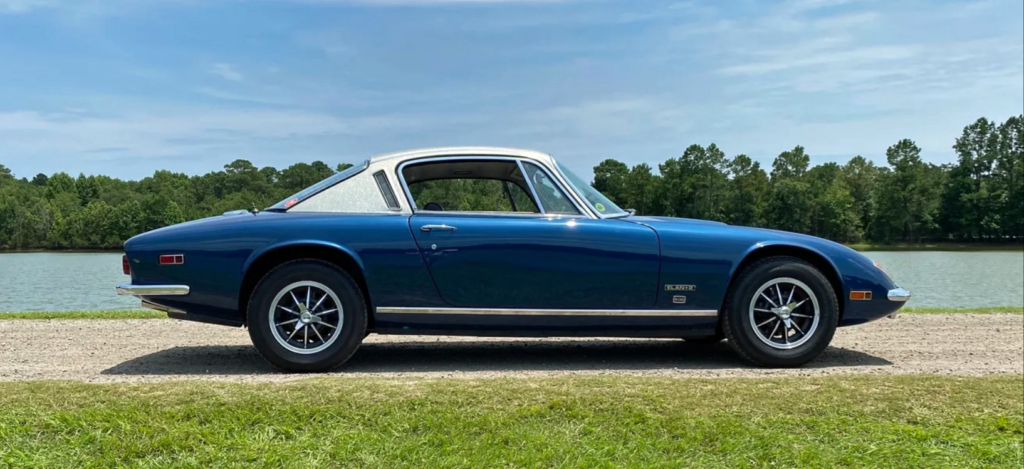
A two-tone Elan +2 that sold on BaT. See what I mean about that body line?
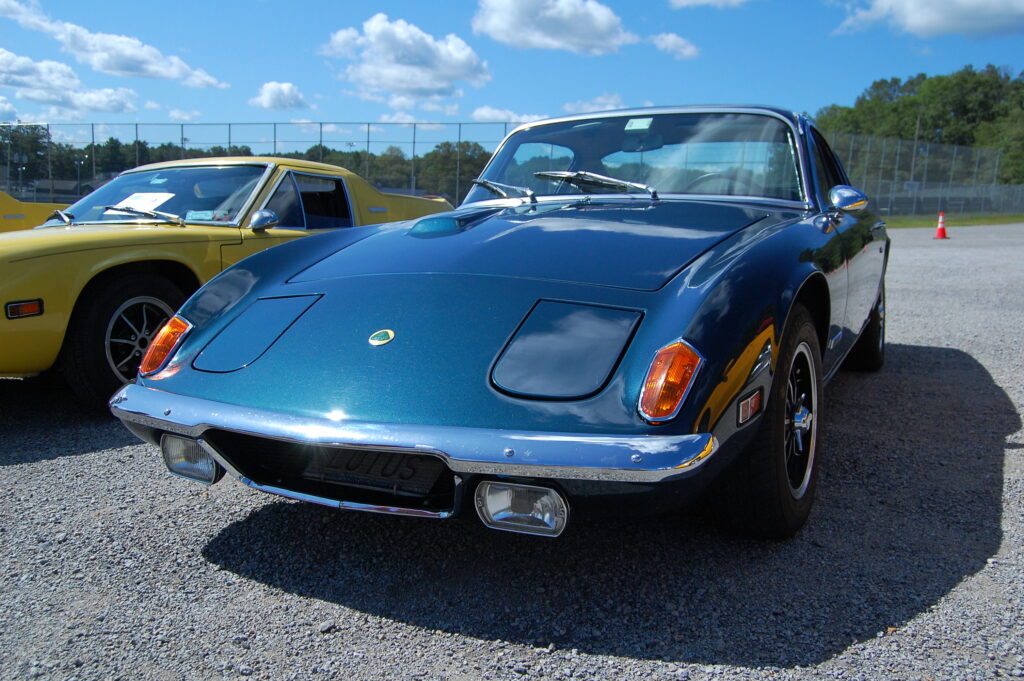
The nose of an Elan +2 at LOG.
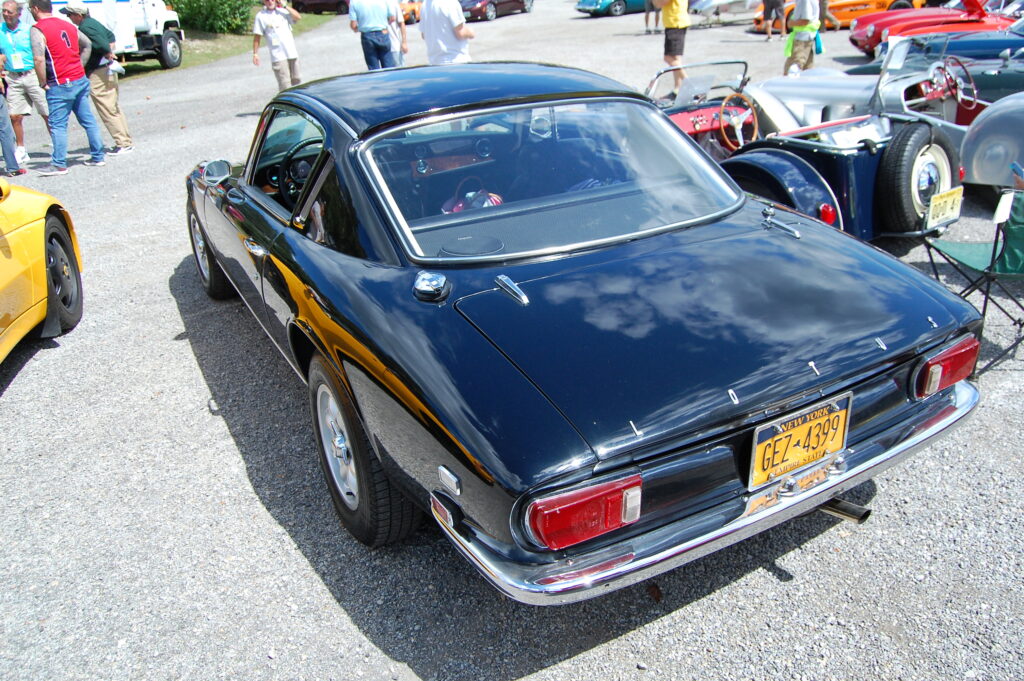
Oh, that rear-quarter view.
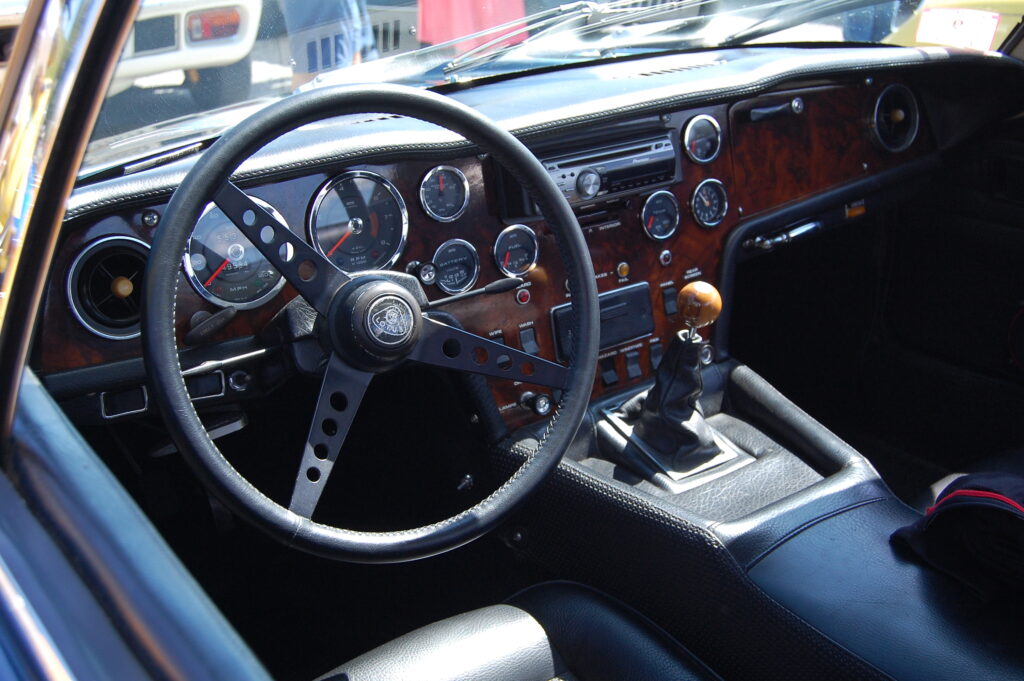
And how can you not want to spend time behind that dash?
I kept my eye open for an Elan +2 in the same way I do TVR 2500Ms, Fiat 124 Sport Coupes, Avantis, and other non-insanely-priced cars I’d love to open up my garage and see, but the only affordable +2s I found locally were basket case cars. And one of the problems with having gone through the Europa’s resurrection is that, having paid six grand for the car and now having $22k in it, there’s no pretending that reviving a long-dead Elan +2 wouldn’t carry a similar price tag.
I attended a few events at nearby Larz Anderson Auto Museum this summer. At one of them, an informal cars and coffee, a TR6 and a Spitfire caught my eye as they drove in. These are cars you rarely see in the wild anymore. Something about seeing them, first in motion and then parked on the grass for passers-by to ogle, fired the old Brit-loving neurons. It rekindled the knowledge that my odd but addictive Europa was part of a family of cool, zippy, well-proportioned 1960s-1970s era British cars that just oozed panache, style, and snap. Most of these cars were killed off in the mid-1970s due to a combination of emissions, safety, build quality, bean counter, and competition issues, but there was a lot to love about them back in the day, and there is still all that to love about them now. This was nothing I didn’t already know, but for some reason, it struck me as almost an epiphany.
And then a Series II E-Type strutted in, looking like the mature version of my pimply-faced GT6. I badly want an E-Type. I have for decades. But I’m so stuck in my “I do my best work at five grand” comfort zone that I rarely think of spending real money on non-basket-case cars. Only twice have I ever done anything close to that. My only baely-five-figure purchases were the ’82 Porsche 911SC in 2001, and the clownshoe in 2006. That’s it. But seeing and walking around an E-Type made me start thinking things that just weren’t right. When I got home, I began searching for them on Facebook Marketplace. Surprisingly, I saw a very pretty red ’71 Series II for $37.5k. Sheesh, I thought—if I sold, say, the clownshoe and the Bavaria, I could probably swing that. Unfortunately, the business that was selling the E-type had clear red flags on Yelp for misrepresenting cars, and a search on eBay revealed that the car had been auctioned, sold, and then reappeared, so some buyers were likely unhappy with it.
But it was this brief “wonder what other nearly-attainable E-Types are out there” flurry of activity that unearthed the Elan +2. I saw the ad on Craigslist for the car in southern NH. The asking price was initially $20k, then a week later was lowered to $17.5k. I wasn’t bowled over by the photos in the ad of the solid-red car (my +2 fantasy was a blue/white two-tone car like the photo above), but when it dropped to $15k, I read the ad carefully. The fact the car’s engine rebuild sheet included “sprint-specification” camshafts intrigued me (my Europa has standard Federal-spec cams, and its wind-out leaves a bit to be desired), so I called.
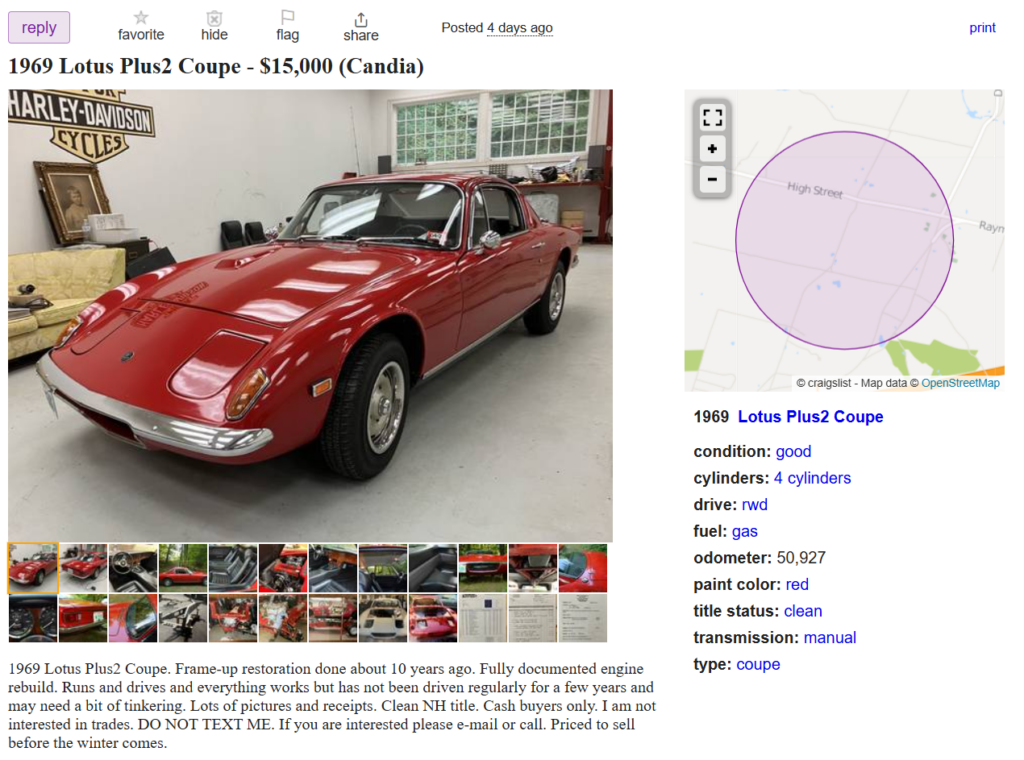
Interesting, right?
I learned the sale of the car was being handled by an estate-sale broker for the wife of the deceased owner. He had a very appealing way about him, friendly and open yet highly professional and knowledgeable. He rattled off the car’s history, going back four owners. Although it was far from a slam-dunk that I was going to buy it, it was only an hour north of me, so if nothing else, it was a great excuse to go for one final foliage peep in Hampton the ’73 2002.
But when I saw the car, I melted. No, it wasn’t two-tone, but the paint (originally Lotus red but reshot in BMW-MINI “Chili Red”) absolutely popped. I gave it a quick once-over, then drove it. It stumbled and hesitated at low to mid rpm, but the presence of the Sprint-spec cams was dramatic—when it came on the cams, it just took off in a way my Europa doesn’t. That is, in a “car like that, you can get sex out of” sense, the sex was even better.
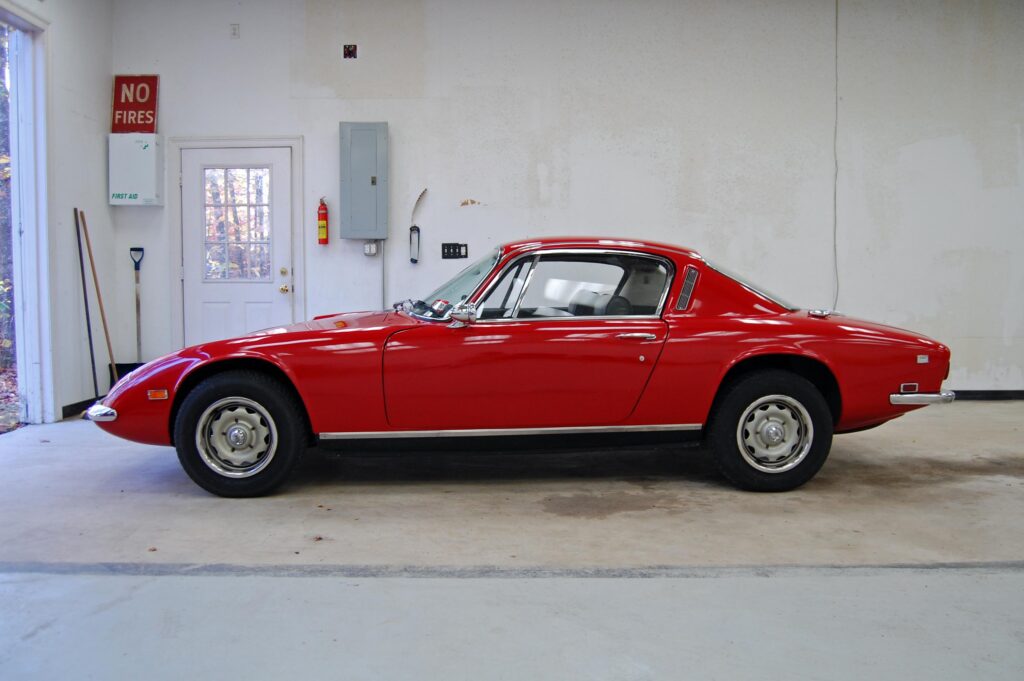
Jaw, meet ground.
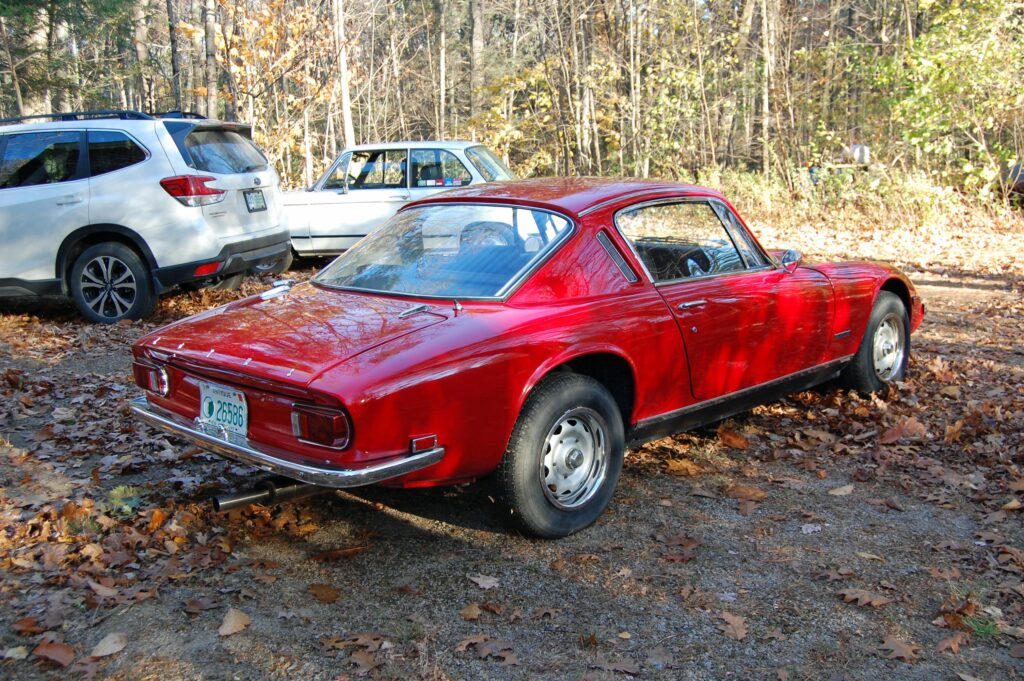
The lovely Elan +2 with Hampton in the background.
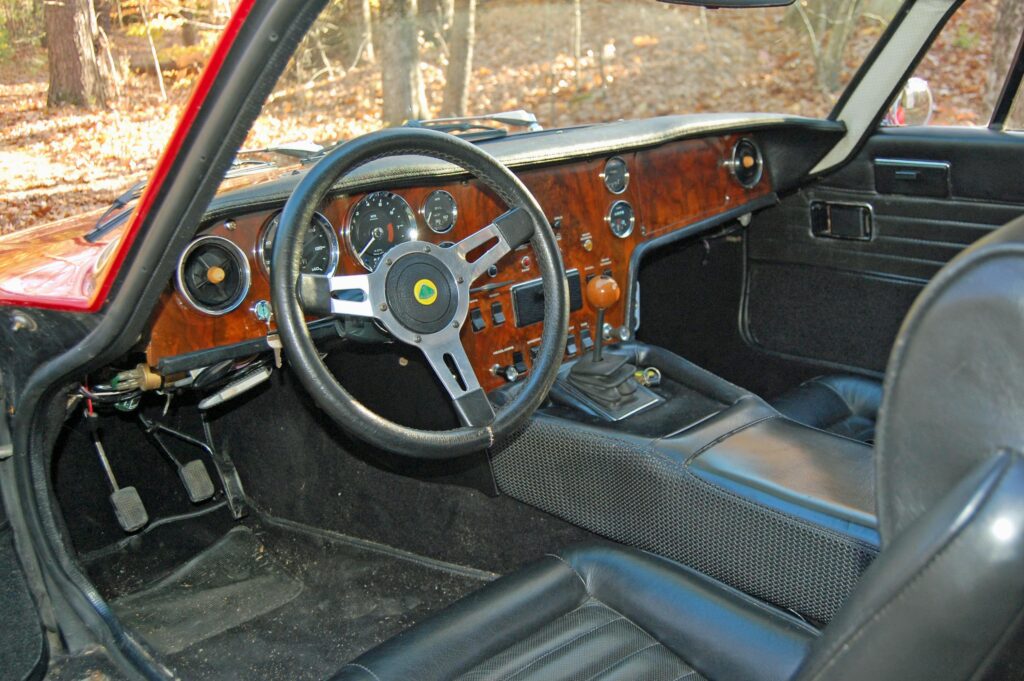
Yes, and it’s got “the dash.”
Unfortunately, as the car gathered speed, the other thing that was dramatic was the overpowering smell of ammonia from the beautiful wood dashboard’s vents.
Mice. Why is it always @#$&ing mice?
I explained to the broker my recent history of dealing with mouse-infested vehicles (the Silverado work truck, the Nissan Armada, my other Lotus, and most recently, the FrankenThirty’s heater box). That meant that, on the one hand, I knew how to deal with it, but on the other, I really didn’t want to. He encouraged me to make a reasonable offer, but I needed to consider it. In total, I was there for 2 1/2 hours. I thanked him profusely for not rushing me. It was dark by the time I piloted Hampton home.
But on the way, I had an important realization. I’ve long said that the grail for people like me (mechanics who don’t do bodywork) is to find a vehicle in excellent condition in terms of rust, paint, and interior, but being sold below market value because it is either generally mechanically run down or needs a single expensive repair like a head gasket. As a car’s value appreciates, specimens like that become harder to find, both because owners are generally willing to pay for the needed repairs and because, even if they don’t, the vehicle’s value is still high because the value is primarily in the cosmetic condition. The previous four mouse-infested vehicles I’ve dealt with were that way because they were neglected cars that were stored outside. This was different. This vehicle had a restoration about 12 years ago, was loved and stored indoors, and was only being sold because the owner had passed away. In other words, the Elan was exactly what I said the grail was, except its one big need wasn’t a blown head gasket; it was mouse stink.
It was a certainty that anyone else who drove the car would experience the same mouse-stink-nado that I did and would react negatively. But as long as the contamination was limited to the heater box, it was a tractable problem that removal, disassembly, scrubbing with enzyme-based cleaner, rinsing, running an ozone generator if necessary to treat the residual smell, and reassembly should solve. The risk was that the contamination was also in the headliner, rug, sound insulation, and other porous surfaces and that the damage included chewed wires. I thought about this all carefully and weighed the fact that the broker encouraged me to make an offer and the seller wanted the car gone before winter. I emailed the broker this thought process along with a number that had the risk baked into it. I didn’t expect it to be accepted. It was more that if I learned that someone else had gotten a good deal on the car, I would’ve been pissed.
The next day, the broker called me and told me something that made my heart jump out of my chest. He said that he told the owner’s wife that I was the right buyer for the car, and when he told her my name, she remembered that I had actually met her husband and his best friend (who was also the car’s previous owner and the guy who restored it). Two years ago, I talked about the mechanical revival of my Europa at Larz Anderson. These two men had come to the talk, and the wife remembered her husband telling her that I spoke with them afterward. She accepted my offer and said that he would be thrilled if he knew that the car was going to me.
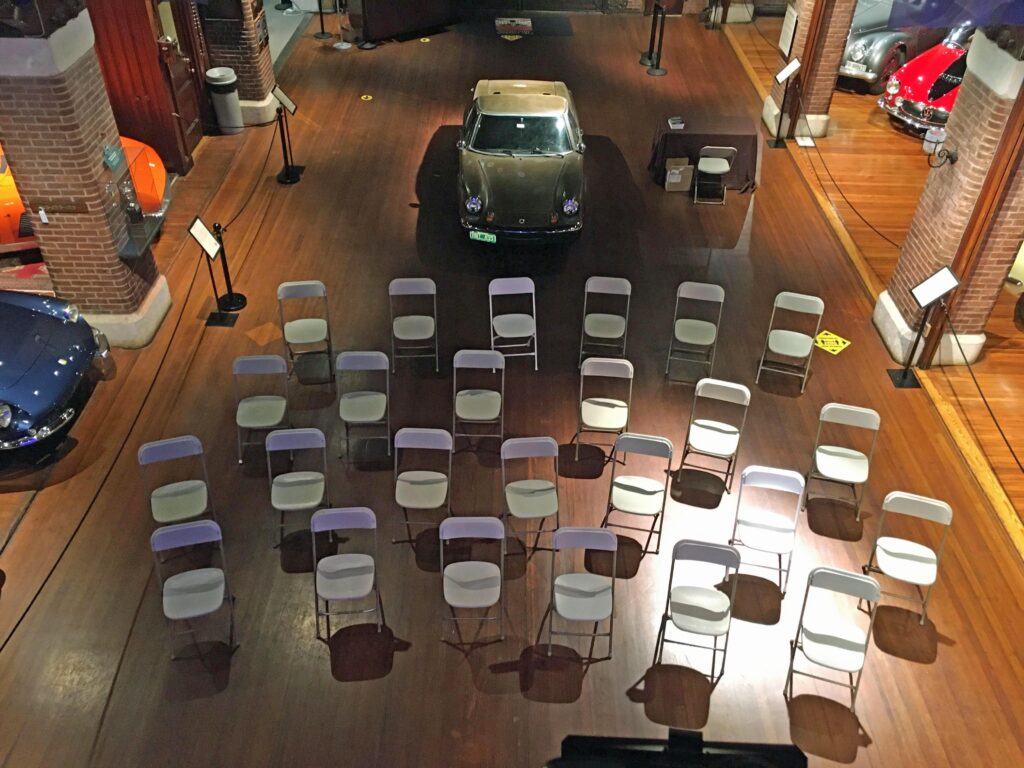
The +2’s previous owner and the owner before that were actually in the room for this talk.
A few days later, I drove the Armada towing a rented U-Haul trailer up to southern NH, passed papers, loaded the +2, and hauled my prize home. Unbeknownst to me, my wife shot this video when I unloaded it in front of my house. After a victory lap around the block, I shot this quick walk-around.
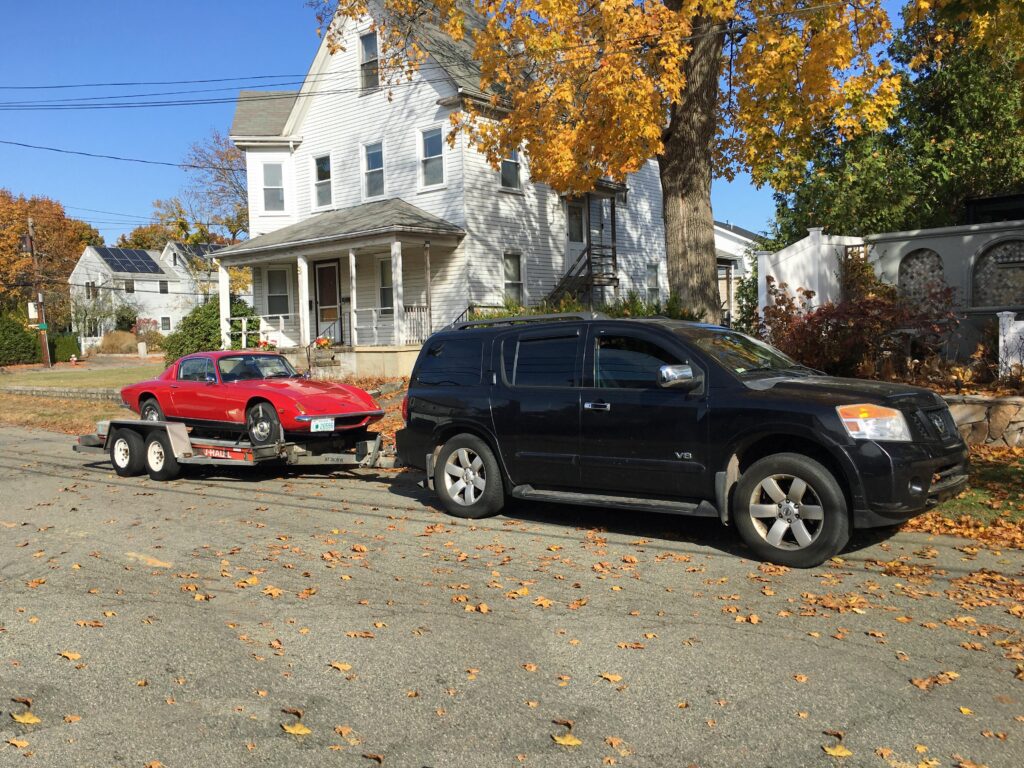
Mine! Compared with the Europa, the Elan +2 looks like a real car, but in the shadow of the Armada, it seems like the lithe little bit of a thing that it is.
With the E9, the FrankenThirty, and the +2, there are now three red cars at the house, something that’s never happed before. But more importantly, the purchase of the +2 brings the car count to the historically-unprecedented number of 14. Fortunately, my 98-year-old neighbor, the woman whose husband made my life a living hell for decades, is letting me keep Hampton in her garage over the winter.
So, the two-Lotus era has begun. Don’t worry—I’ll always primarily be a BMW guy. They outnumber the Brits ten to two. But in the garage, it’s two against one. Then again, the Lotii are literal lightweights. I think the E9 can take ’em.
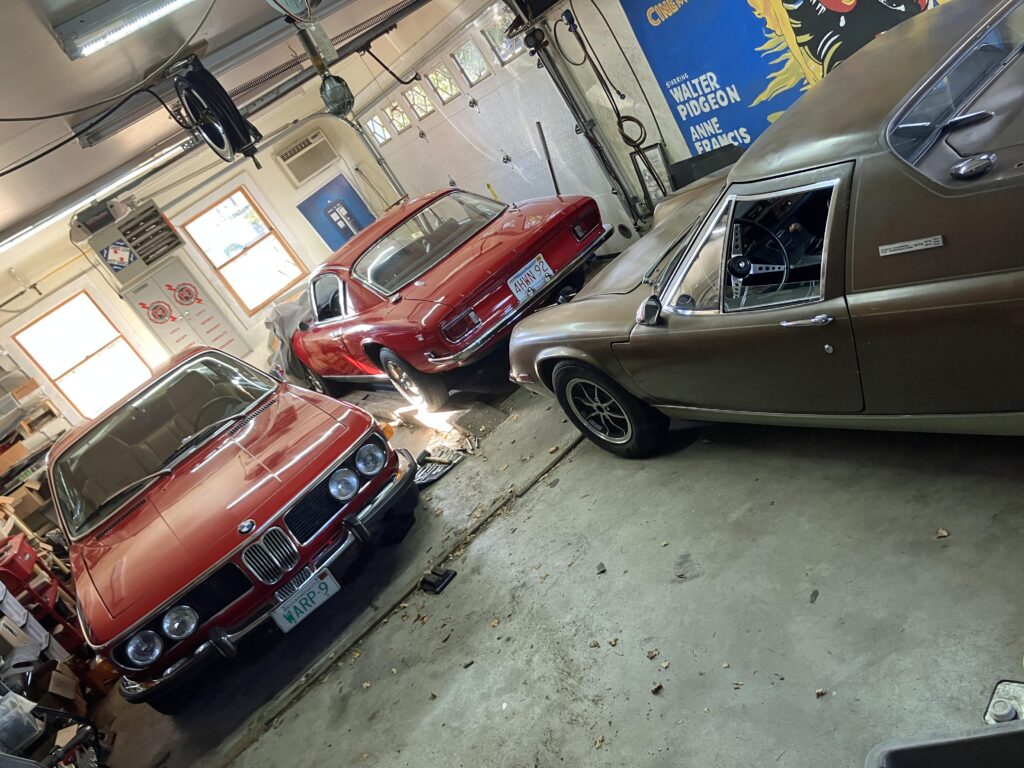
—Rob Siegel
____________________________________
All eight of Rob’s books are available here on Amazon. Signed personally-inscribed copies can be ordered directly from Rob here.

